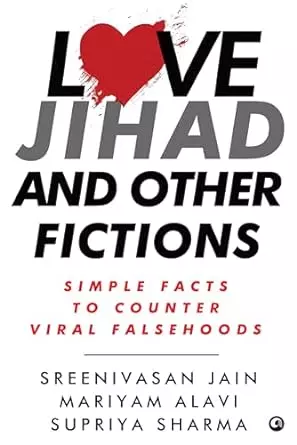Book Review | When the fiction is so gratifying, can journalism be ever enough?

The fact that this book has been published and that it nails the lies of the ruling Bharatiya Janata Party (BJP) and its leaders, Prime Minister Narendra Modi and Union Home Minister Amit Shah, is a bold event in itself. But it would seem that the powers that be do not consider the challenge posed by this book to be of no consequence because they are confident that their lies carry the day, and the facts highlighted in the book would make no impression. And they are perhaps right. A major segment of the Hindu majority, of all classes, do believe in many of the myths and lies spread about Muslims, that the Muslims have more children because they marry four wives and they will overtake the Hindu populations soon, that they lure, convert by force and marry Hindu girls and parties like Samajwadi Party (SP) in Uttar Pradesh have favoured Muslims as part of Muslim appeasement.
The authors, three journalists with impeccable credentials of sifting truth from rumour, have gathered as many facts as they could to prove that all these claims against Muslims are fabricated. They expose systematically love jiihad, population jihad and Muslim appeasement with facts and figures. Yet they stand on weak ground, because as persons looking for truth, they refuse to make assertions that do not hold good as general statements. It is the virtue of truth that it acknowledges when what the other person states is a fact. So, they acknowledge the fact of Modi’s assertion that the SP government allotted more money for burial grounds in Uttar Pradesh than for crematoria. But they refute the charge of Modi that electricity is available for Eid and not for Diwali. And they show through government chart how electricity supply varies according to season, and how the dates for the Eid shift through the years. Truth has to be scrupulous and the authors adhere to the rule. But for those who indulge in wild generalisations, accuracy is not a virtue.
And in the same nuanced manner, the authors explain Assam’s immigration issue, how immigration in the 1930s when Muslim farmers from Mymensingh area came and settled in parts of Assam is different from that of the 1950s when most of the migrants from then East Pakistan were Hindu Bengalis. And they note how the laws were strict in deporting the then East Pakistan migrants from Assam in the 1960s. If this book were a mere anti-BJP diatribe, then it would have ignored the many aspects of the truth, and the many facts.
And as diligent journalists, they trace the facts of many of the love jihad stories that became widespread on the social media since 2014 of Muslim young men and Hindu young women, and how in many cases it is a case of consenting young adults fighting conservative social traditions, and how it is that the Hindu right-wing activist groups who arm-twist the parents of Hindu girls to foist cases against Muslim boys. And they explain why the young people cannot go for the civil marriage under the Special Marriage Act and why one of them has to convert because that is the easier way to go about it. They do not gloss over the fact that it is the Hindu girl who goes for conversion.
It is respect for facts that makes this book valuable. It shows up the complex Indian social reality. The authors refute the lies of the Hindu right-wing through the presentation of facts and figures. Is it sufficient to nail the lies of the Hindu right-wing groups? It may not be. But the authors are unwilling to indulge in partisan rhetoric to score points. Their tone is rational and persuasive. And that is the only way to counter propaganda.
Love Jihad and Other Fictions
By Sreenivasan Jain, Mariyam Alavi and Supriya Sharma
Aleph;
pp. 183; Rs 799

